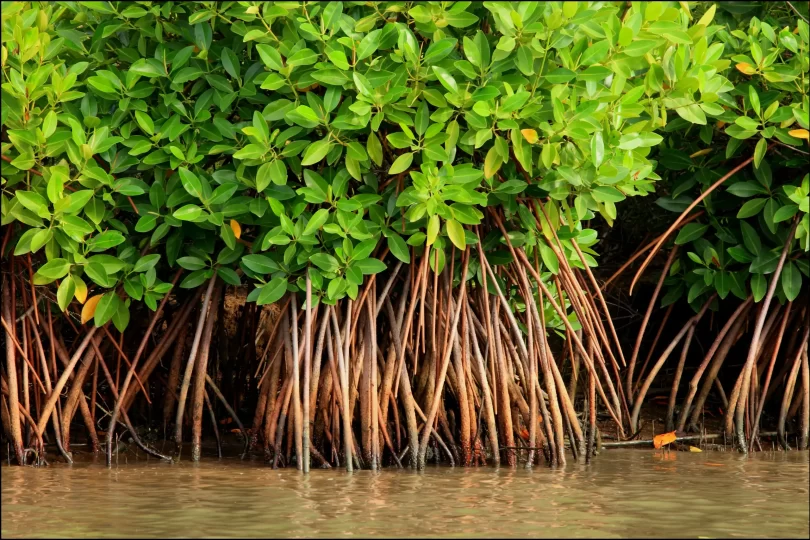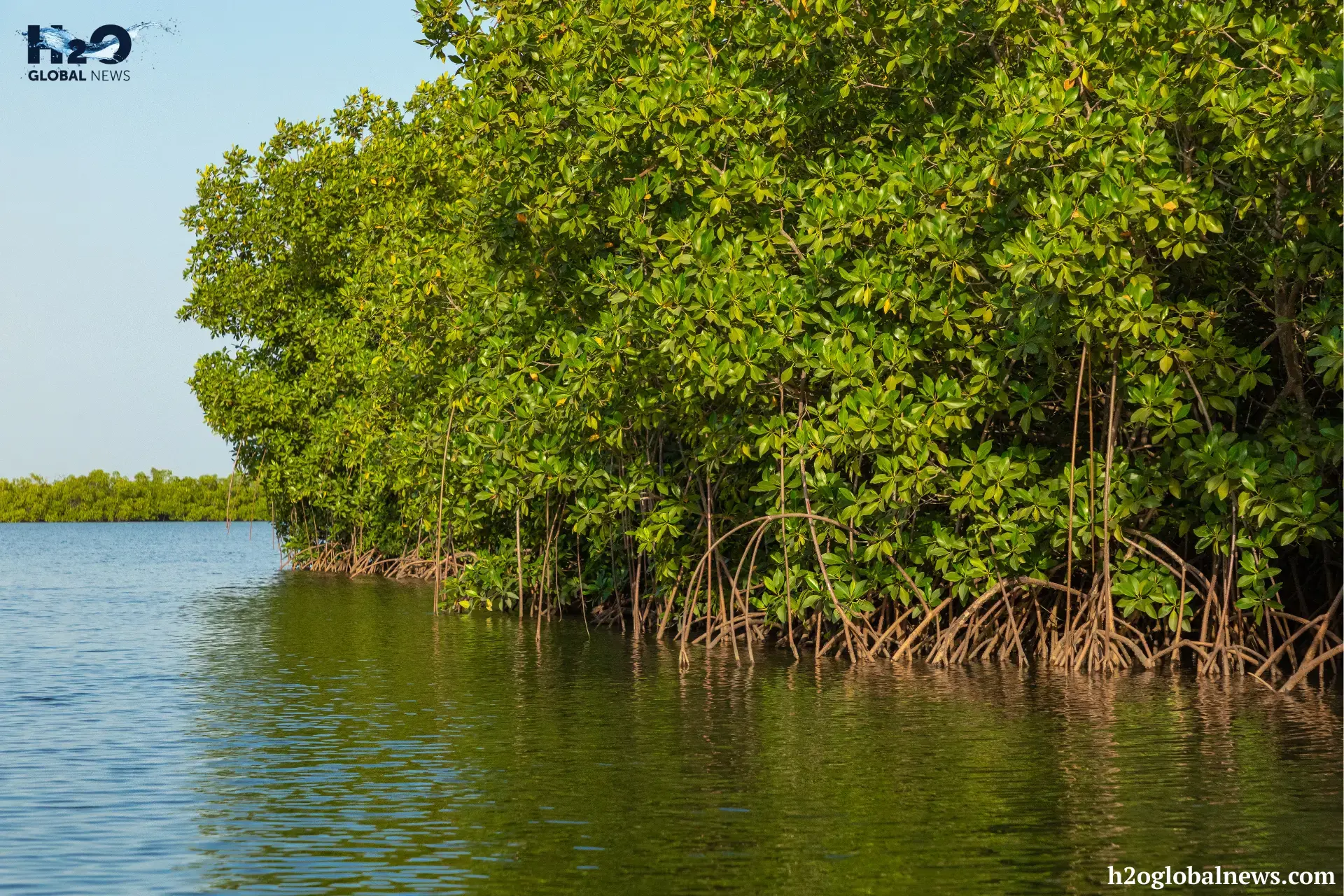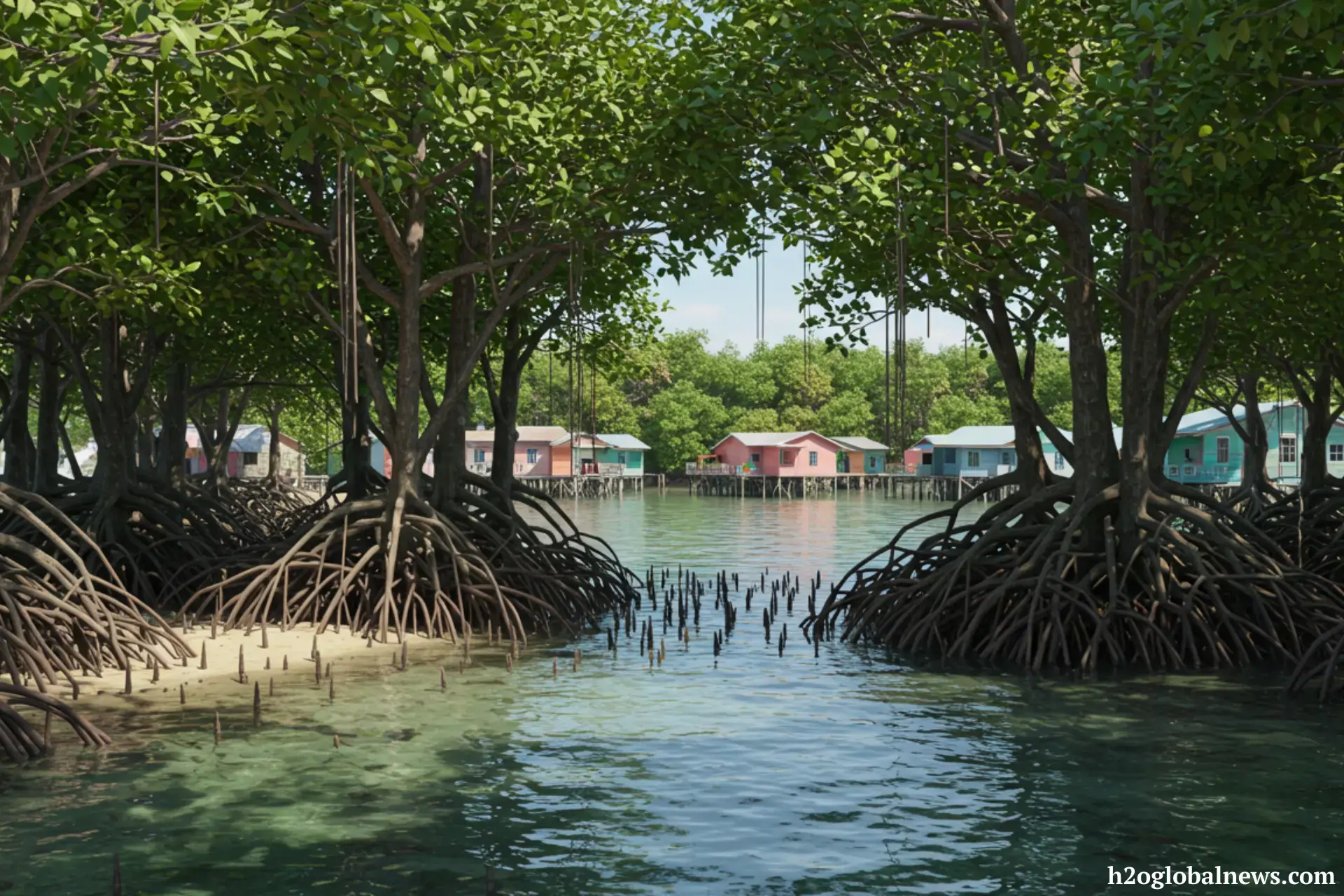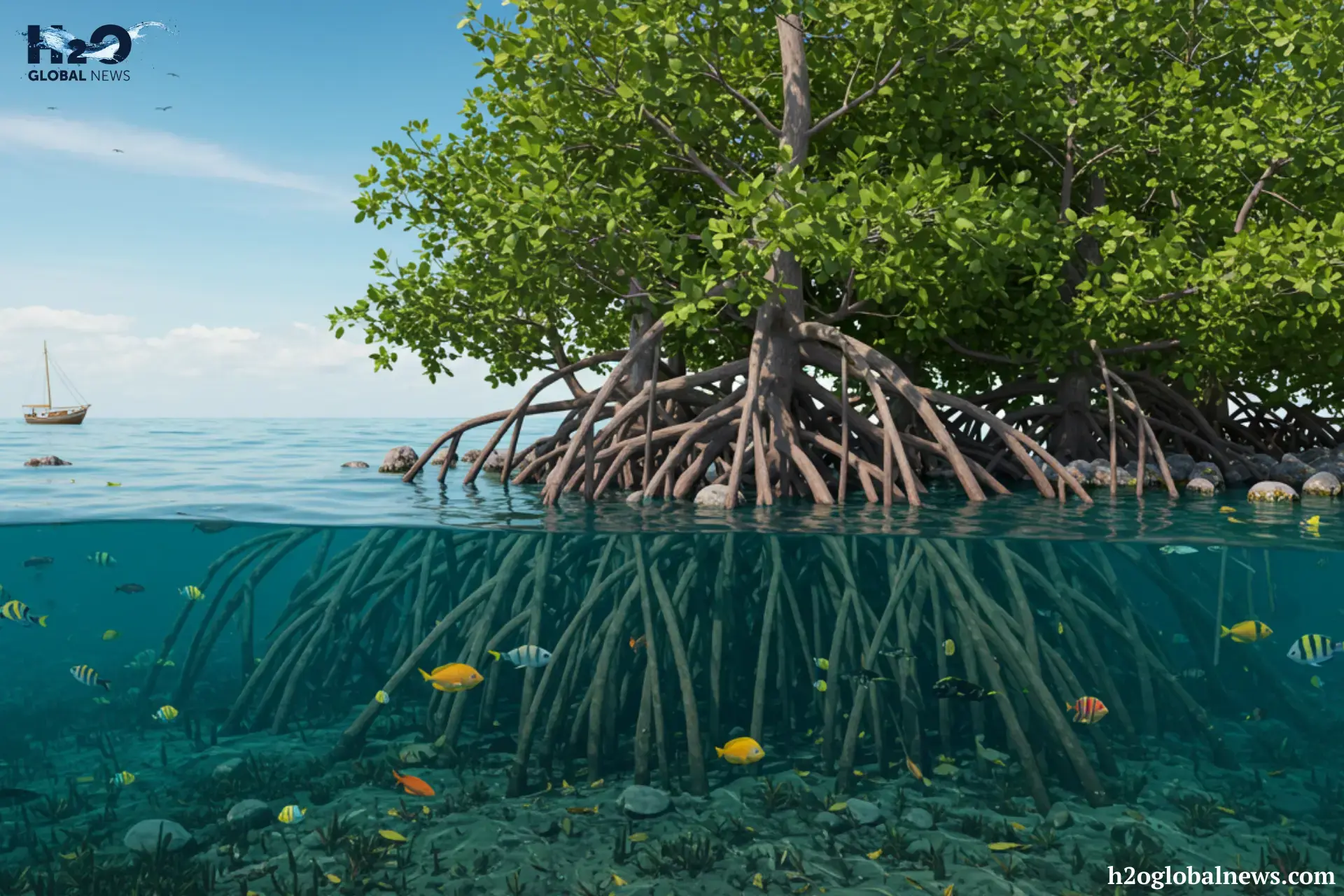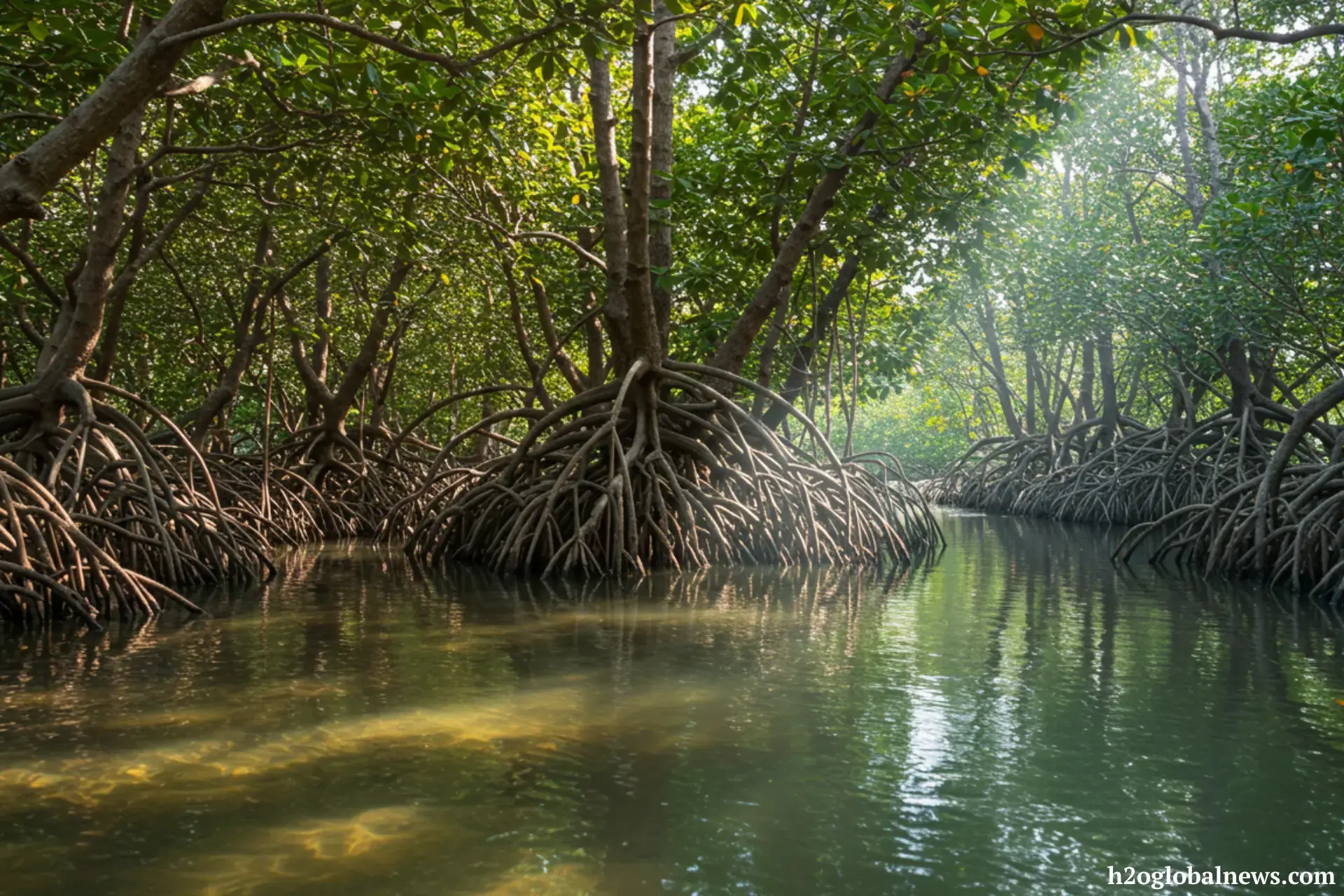Mangroves are often overlooked but play an important role in the environment. These coastal forests, found in tropical and subtropical regions, provides many benefits. From acting as natural barriers against storms to supporting diverse wildlife, mangrove forests are essential to the health of our ecosystems. So, let’s just discuss the importance of mangrove trees and how they clean water.
What are Mangroves?
Mangroves are special types of trees and shrubs that grow in coastal areas where freshwater from rivers meets salty seawater. You can find mangroves in Florida, Southeast Asia, the Caribbean, and many coastal areas around the world.
They have a unique ability to survive in salty, muddy, and waterlogged conditions where most plants can’t grow. Their tangled roots stand above the water and soil, which helps them breathe and stay stable during high tides and storms.
A mangrove forest is a dense group of mangrove trees growing together along coastlines, especially in tropical and subtropical regions. Mangroves are found in over 120 countries, with some of the largest in Indonesia, Brazil, Australia, India, and Nigeria.
The mangrove ecosystem includes not just the trees but all the living things and physical features in that coastal area, like water, soil, animals, and microbes. Its rich and diverse habitat supports marine life like fish, oysters, sea turtles, and microorganisms that help break down waste and recycle nutrients.
They thrive in tropical and subtropical regions. Mangrove ecosystems are sometimes called “the kidneys of the coast” because they filter out pollutants and keep the coastal water clean.
Why are Mangroves Important? Benefits of Mangroves
Many people don’t realize just how many benefits mangrove plants give us. Here’s why they matter:
1- They Protect Coastal Communities
They act as natural barriers during storms and high tides. Mangrove roots reduce wave energy and hold the soil together, which helps to prevent floods and erosion. According to the studies, mangroves can reduce wave height by up to 66% over short distances. Also, after the 2004 tsunami in Asia, areas with mangrove forests suffered less damage and fewer deaths than those without them.
2- They Store Huge Amounts of Carbon
Mangroves are amazing at capturing carbon dioxide, the gas that causes global warming. They trap it in their roots and soil for hundreds, even thousands, of years. Studies have shown that mangroves can store up to four times more carbon than tropical rainforests. That means protecting mangroves helps fight climate change more than many people realize.
3- They are Like Home For wildlife
Mangrove swamp areas are full of life. Fish, crabs, shrimp, birds, and even monkeys depend on mangrove forest trees for food and shelter. Young fish often grow up in these safe, shallow waters before moving to the open ocean. About 75% of tropical commercial fish species spend part of their life in mangrove forests. Without mangroves, many animals would lose their homes and breeding grounds.
4- They Clean and Filter Water
Mangrove roots trap sediments, heavy metals, and pollutants like natural water filters. They keep coastal water clean, protect coral reefs and seagrasses from getting buried in silt, and help maintain the balance of salt and freshwater. A study by the National Oceanic and Atmospheric Administration (NOAA) found that mangrove forests can trap up to 80% of sediments and pollutants flowing from rivers to the sea.
However, increasing human activities such as water abstraction can threaten these ecosystems by altering natural water flows and salinity levels, making the protection of mangroves even more urgent.
Can Mangroves Clean Water?
Yes, mangroves act like natural water filters along coastlines. Their roots, soil, and surrounding vegetation work together to trap and break down harmful substances before they reach the ocean. Here’s how they can do it:
1- Trap Sediments and Pollutants
As rivers and streams carry water to the sea, they also carry mud, plastics, chemicals, and waste from cities and farms. When this water passes through a mangrove forest, the dense network of roots slows it down.
That gives sediments and pollutants time to settle to the bottom or get stuck among the roots, which prevents them from flowing into nearby coral reefs and seagrass beds.
2- Absorb Excess Nutrients
Fertilizers used in farming often wash into rivers and add too much nitrogen and phosphorus to coastal waters. This can cause algal blooms that choke marine life and lower oxygen levels in the water.
Mangroves help by absorbing these nutrients through their roots and soil. Their unique microbial communities break down harmful compounds naturally. They basically work like green water filters.
3- Filtering Heavy Metals and Wastewater
Mangrove roots and surrounding soil can also absorb and hold onto heavy metals like lead, mercury, and arsenic, often found in industrial wastewater. Over time, these harmful substances are either stored safely in the soil or transformed into less toxic forms by bacteria in the mangrove mud.
Mangroves are often compared to wetlands due to their ability to filter and clean water naturally. Wetlands also provide similar ecosystem services, helping to trap pollutants, support biodiversity, and maintain water quality.
FAQs
1- Do mangroves help with climate change?
Absolutely. Mangroves store large amounts of carbon in their soil and roots, which reduces greenhouse gases. They are among the most carbon-rich forests on Earth.
2- How fast do mangroves grow?
Mangrove growth rates depend on species and environmental conditions, but some species can grow up to 1 meter per year in ideal conditions. However, recovery of mangrove forests can take decades.
3- Are there different types of mangroves?
Yes, there are several species of mangroves, each adapted to different environments. The most common species include the red, black, and white mangroves, each with unique root systems and ecological functions.
4- How do mangroves support biodiversity?
Mangroves create rich ecosystems by providing food and shelter for various wildlife, including birds, insects, and marine species.
Conclusion
Mangroves are more than just coastal trees; they are powerful ecosystems that protect our shores, clean our water, and support marine life. In a world facing climate change and water pollution, mangroves provide a natural, low-cost, and effective solution to some of our biggest environmental challenges.



